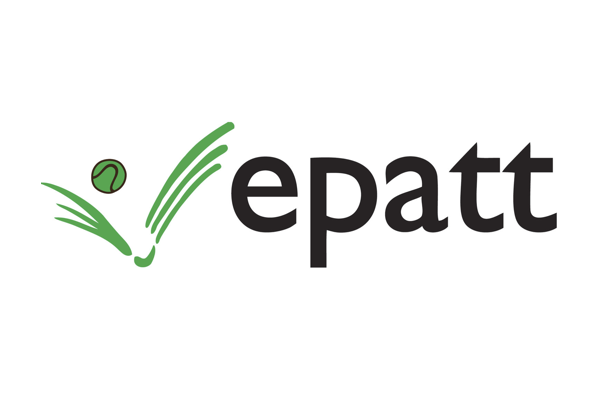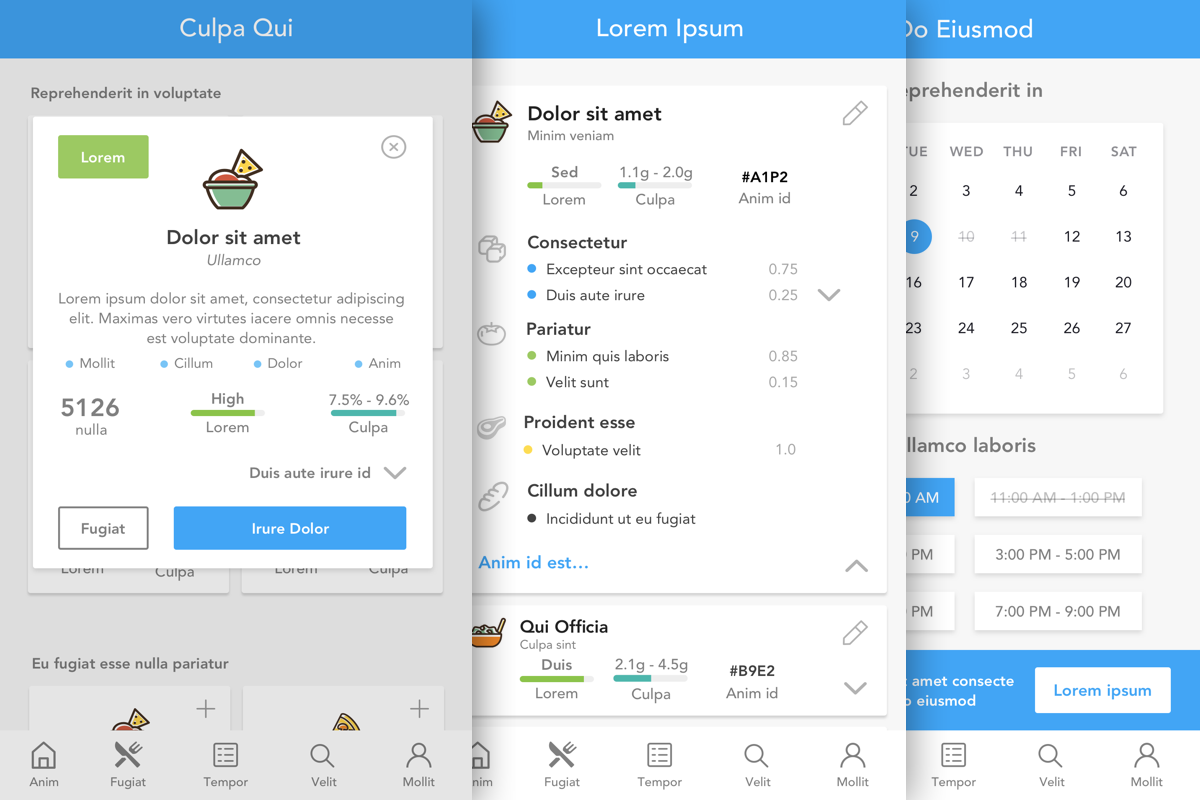Projects
My recent work
Behavioral Personas at Stanford School of Medicine
categoryAbout the project
The Lane library is the main hub for research tools and resources used by the healthcare professionals at Stanford Medicine. Our team initially set out to redesign the website to better serve its users. We started by testing the visual design of a mockup of the new website but later realized that our results were insufficient. We needed to conduct behavioral persona research and investigate brand personality in order to provide an optimal user experience.
peopleTeam & role
The team consisted of Olya Gary, lead UX designer, Lin Sun, marketing specialist, Michelle Bass, former population health librarian, Connie Wong, medical education librarian, Leah Anderson, document delivery manager, Sonam Soni, resource management librarian, Ryan Steinberg, software developer and myself, junior UX designer.
The Problem
Because the original website was designed and built with little to no user research involved, we found it prudent to carry out various UX methodologies to better inform our judgment of what was required of the new website by its users. The research sought to better understand users’ perception of the Lane Medical Library (brand personality) as well as how the library website fits into users’ workflows and expectations. We ultimately planned to conduct guerilla research to achieve the following goals:
- Thoroughly test the visual design of the mockup for the new website
- Define the library brand personality
- Define behavioral and situational personas of the users
Investigating the Effectiveness of the Visual Design
We conducted two short experiments with 40 healthcare professionals to test the visual design of the website and uncover user impressions of the library to develop ideas about our brand personality. Having a low budget I stood at the entrance of the library and offered candy to passersby in exchange for 5 minutes of their time to do the survey. I also developed the survey tools myself because professional/premium tools were far outside of our project budget.
Five Second Test
We showed a mockup of the website to users for only 5 seconds then asked them to answer a few questions based on what they remembered seeing. We did this to get information on users’ immediate opinions about what stood out the most and if they could determine the purpose of the website at a glance.
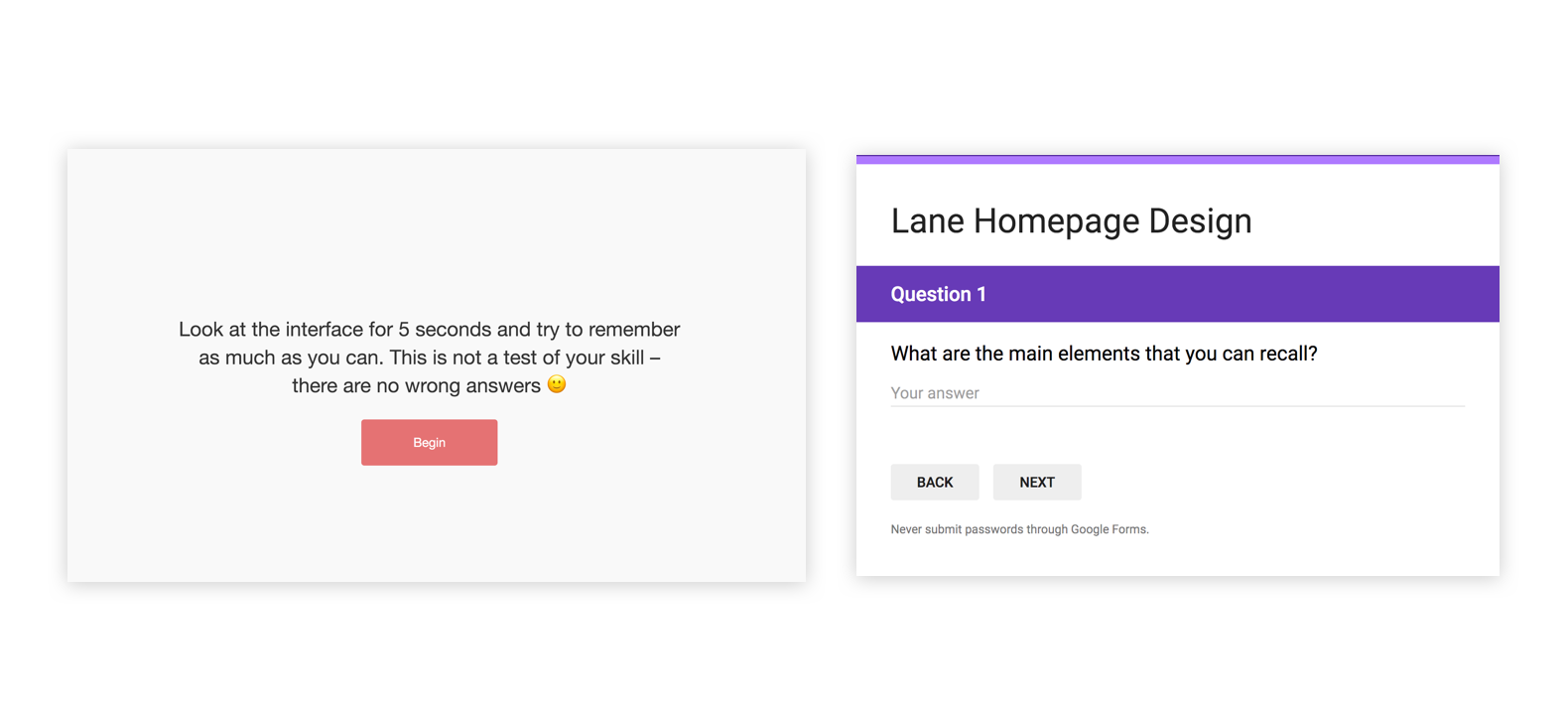
Visual Test
Next, we showed the users the same mockup but now we let them view it while they answered questions about their impression of the design. Questions focused on the layout, imagery, and emotions invoked.
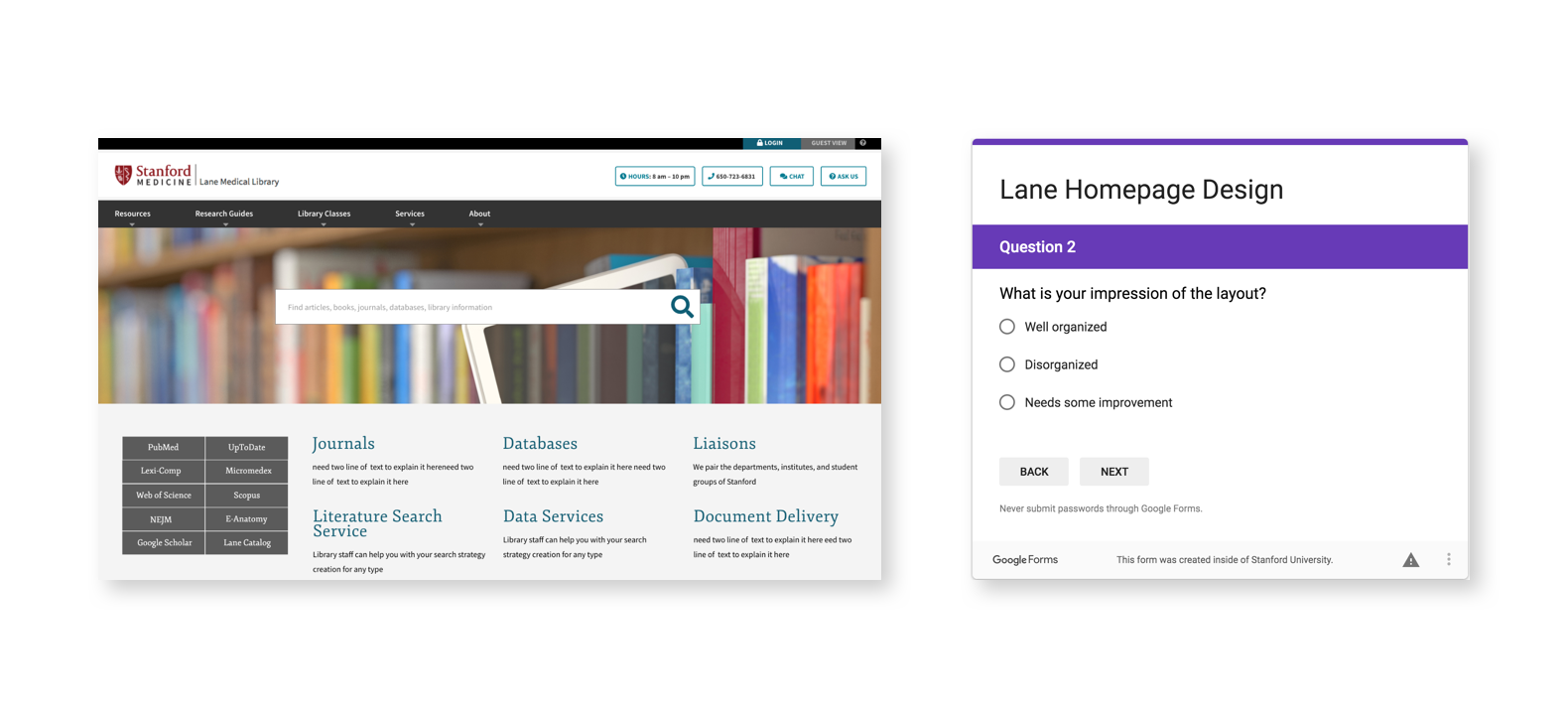
Brand Personality
We investigated brand personality through asking users their impression of the web design but we focused on particular dimensions and traits that were mostly relevant to the domain and omitted others (such as ruggedness).

Insights and Challenges
The results of the visual design test were mostly positive and thus met expectations. We passed the results up to management and they were satisfied with moving forward with the tested visual design.

Although we were happy with the results, we felt that they were insufficient for telling us how the design would work in practice, according to our users' behavior and the context in which they use the research tools. Therefore we decided to conduct behavioral persona research through a questionnaire and in-person interviews with real users.
Persona Research
While Lane had conducted persona research in the past, it had taken a traditional marketing approach that focused on the demographics and personalities of users. While this was helpful in building empathy, we now wanted to investigate the behavior of users and the situations or contexts they’re in while using the research tools. Here are the research questions we aimed to answer:
- How skillful are our users?
- What are their motivations and goals when using the research tools?
- What are the touchdown points for the users when visiting our digital space?
- What is the typical behavior of users and the established paths in their workflows?
Personas Hypothesis - Team Collaboration
We gathered stakeholders across different teams to build a hypothesis of our behavioral personas. Our motivation for doing this was two-fold: to gain insight from people who directly interact with our users on a regular basis and to increase the understanding of personas throughout the workplace to get more buy-in amongst the staff. Along with helping us to get a more concrete picture of our personas, we got an opportunity to demonstrate the usefulness of personas in practice. The staff got a more complete perspective of the various types of users, their patterns of behavior and the frustrations they experience. This reduced the bias that any staff member had towards their own impression of what users are like or who they may be.
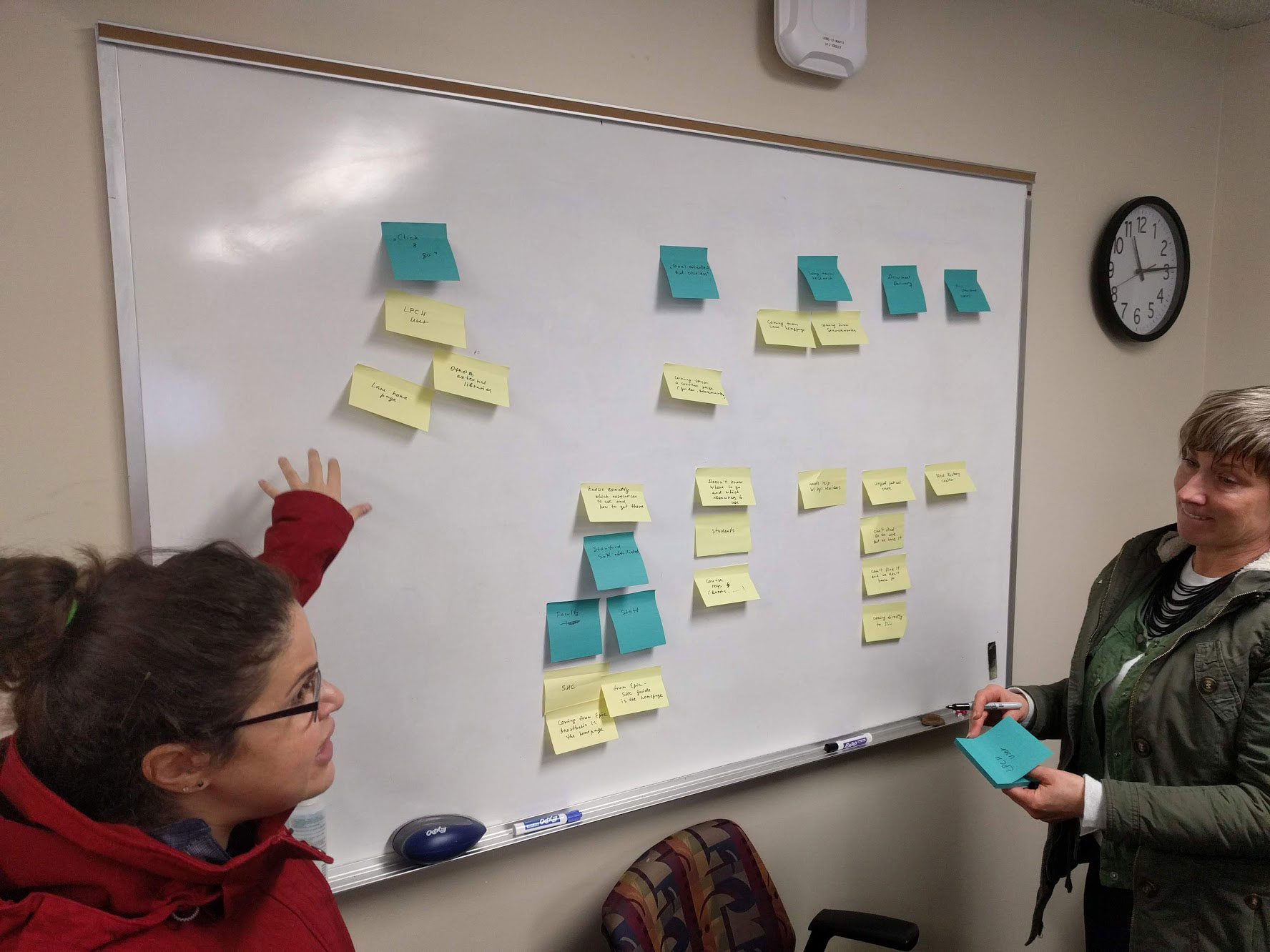
Qualtrics Survey
After making a Qualtrics survey that addressed these research questions, we gathered email recipients from different liaisons of the library, with a majority of participants coming from marketing research done in the past. We sent our survey to about 500 people and had a ~10% response rate. I used Airtable to manage all of our contacts and made use of the filtering and grouping tools to create different segments of the contact list.
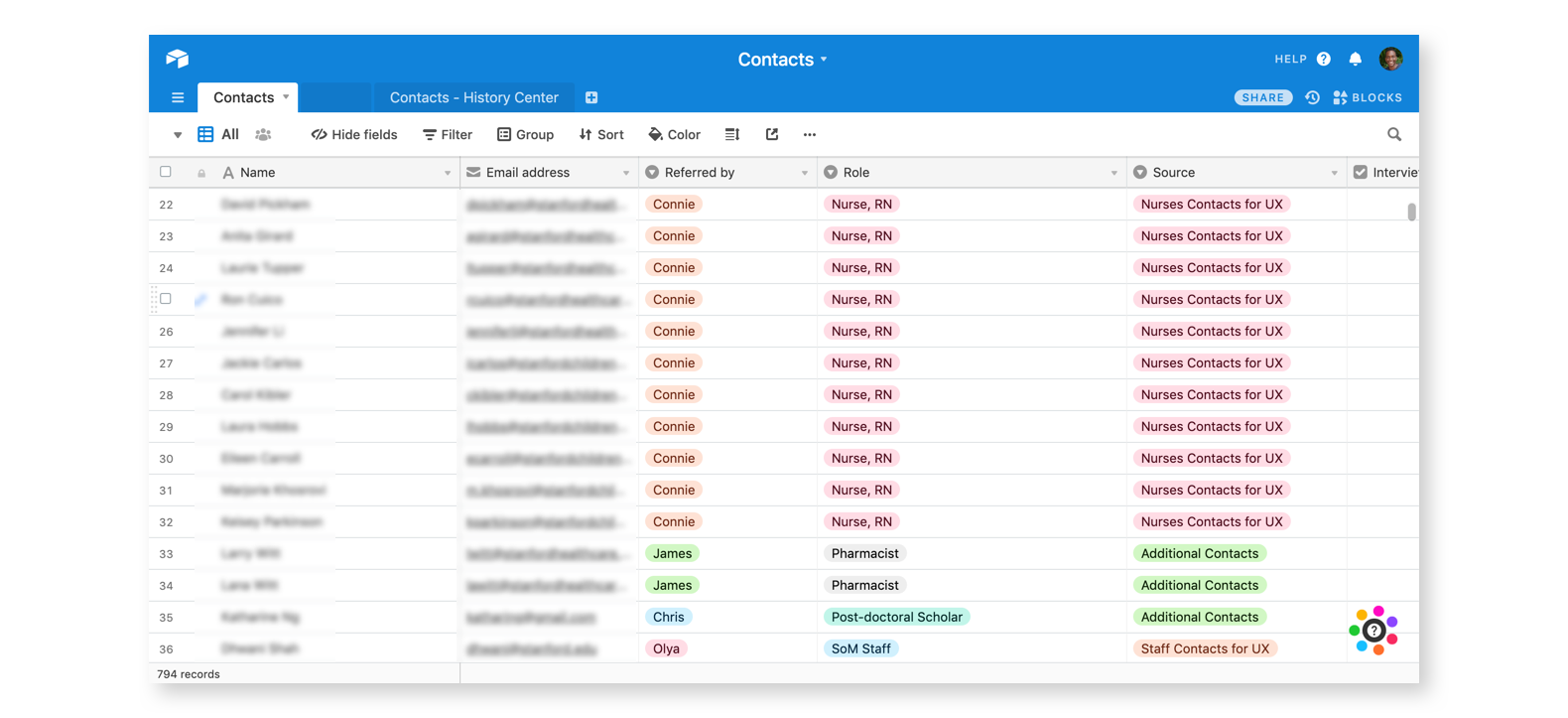

Interviewing Healthcare Professionals
We leveraged our networks within the Stanford School of Medicine to recruit interviewees who were passionate about the research we were doing. We interviewed 7 medical doctors, 1 registered nurse, 3 post-doctoral scholars and 1 medical resident. Each session lasted about 30 minutes; we recorded audio and took notes on users' activity on their laptops (during task demonstration); participants were compensated with a $20 Starbucks gift card. Some of the questions we asked included:
- Can you walk us through your typical workday? In what point of your work/workday do you usually need to use the library's research services or resources?
- What worked and what didn't?
- What about using the research tools creates the most obstacles for you?
- When you decide to use or switch to a different service from Lane Library for your work, what leads you to doing that and what do you use instead?
- If stuck, would you ask for help or would you prefer to find help yourself?
Results Analysis & Affinity Mapping
With over 50 responders to our survey we analyzed those results and used them as a starting point to make sense of the data we gathered from the interviews. It was challenging to connect the quantitative data from the survey to the information we got from the interviews to find insights. I did some affinity mapping to help organize the data points. Here's what we learned:
Depending on a user's goals and motivations at a particular moment, a single user can fall into multiple user groups. For example we found that medical doctors often play more than one role throughout the week (clinical worker seeing patients or educator writing a chapter of a text book or researcher writing an article for a medical journal).
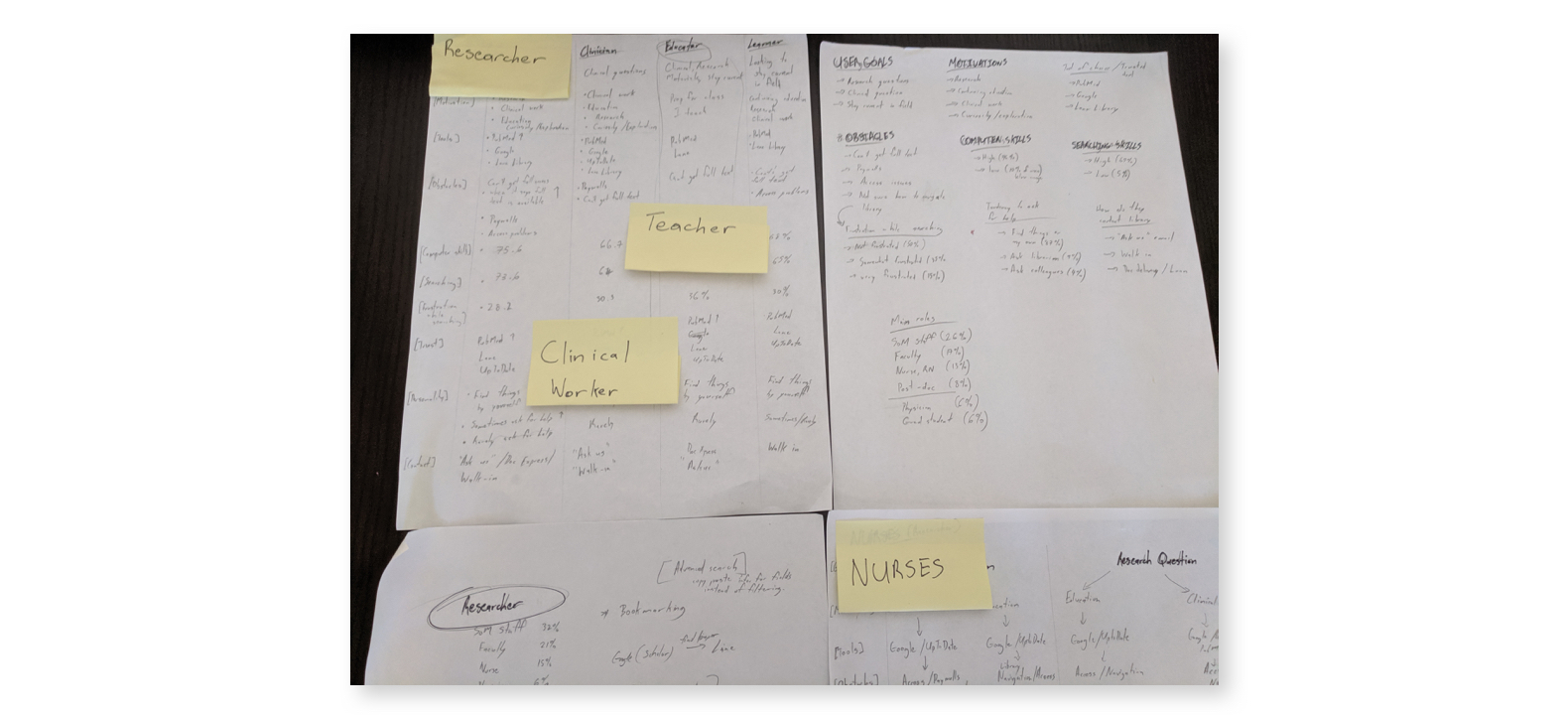
Similarly, the way users interact with the website is different depending on the situation/setting they're in at a given time. For example, a medical doctor on the floor seeing patients will use the website in short bursts to find key information but when working from home will spend hours browsing.
The majority of our users don't start at our website for research but visit when they know exactly what they're looking for.
Most users consider themselves computer savvy and comfortable with using search tools.
Behavioral Persona Profiles
With the insights into who our users are, the context in which they use research tools and their behavior while using them, I designed the following persona profiles:
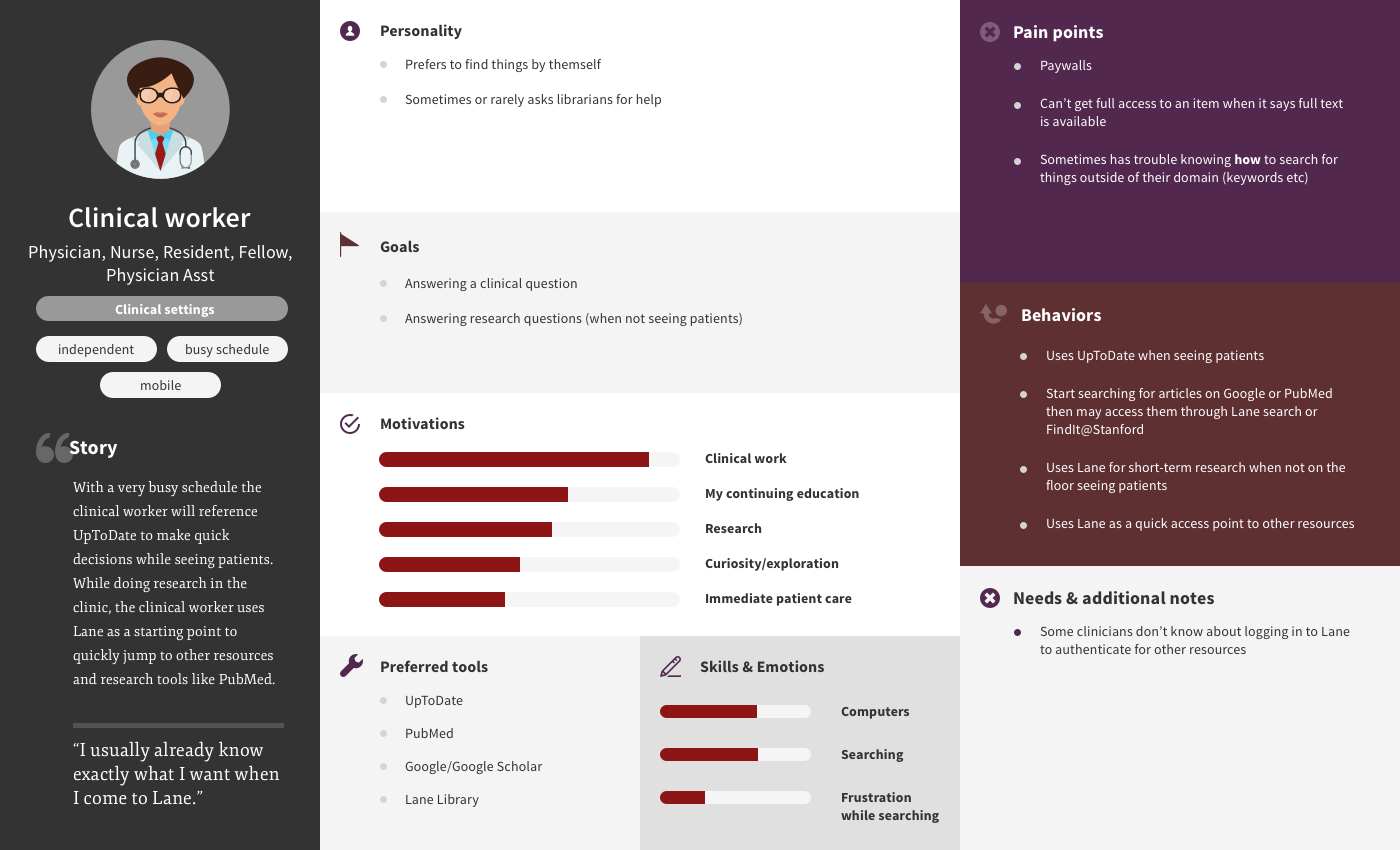
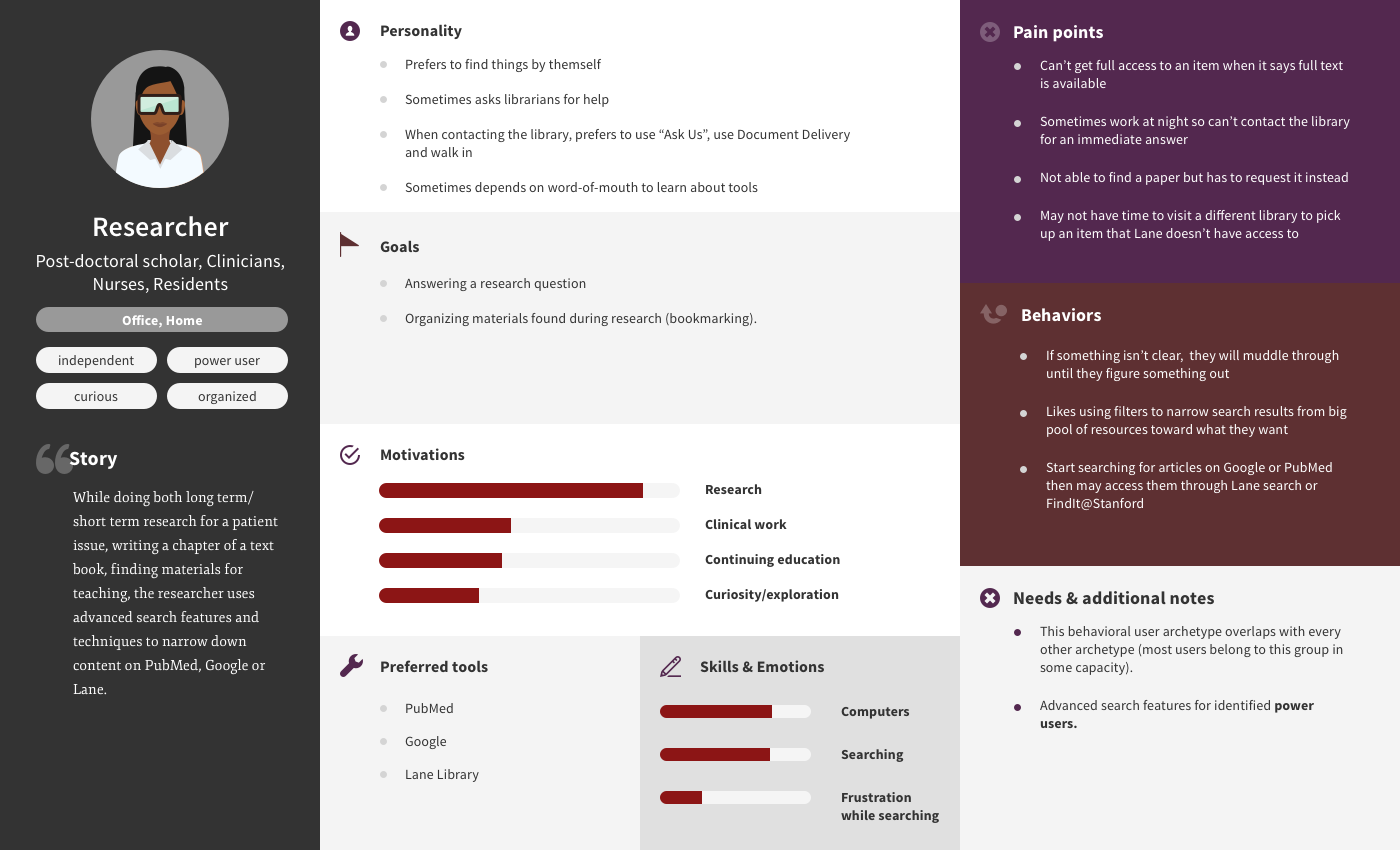
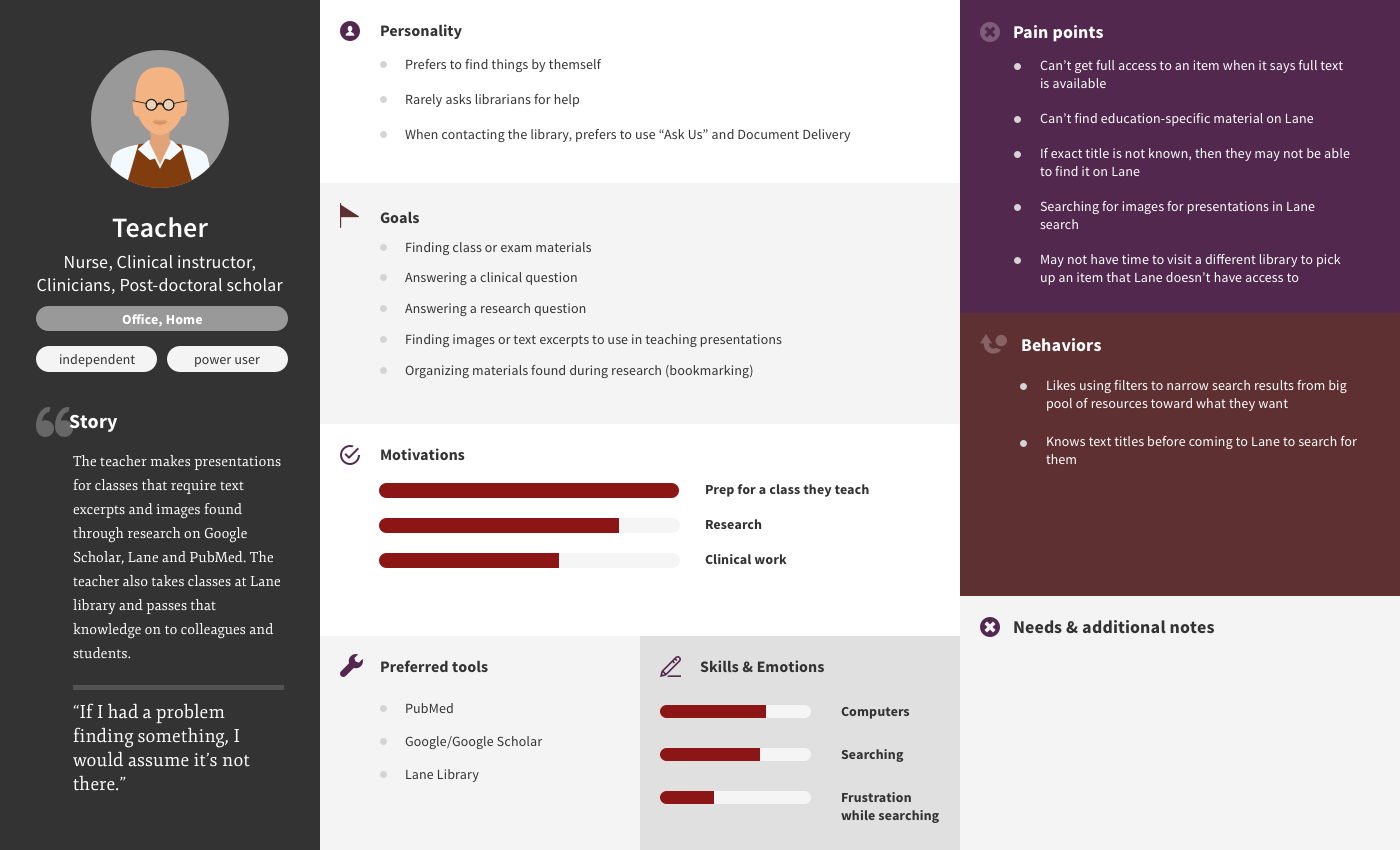
What I Learned
User research has to precede any major committment to design work. After testing the visual design it became obvious that we weren't designing for users well enough by getting their impressions of a product near complete. A better option is guerilla research with a low-fi mockup. If the goal is improvement of an existing product: researching behavioral personas to understand how users are interacting with the product right now to provide better judgment about what approach to design we take next.
Because I interviewed nurses, doctors, residents and researchers, my interview skills improved dramatically. For example through investigating our users' experience with the research tools from such a wide variety of approaches (since they all use the tools in different ways) I practiced changing questions on the fly to get more out of the conversation.
Asking strangers in public to take surveys can be draining. There were a few rejections that sat with me through the hour but after going through this experience, I'm better prepared for next time.
Other projects
